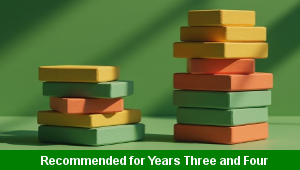Sport Data

Research, organise and present data and information from a sports competition to develop maths skills in statistics. The class can use block, bar and line graphs to record and compare sets of measurements connected to different sports such as the timings and distances of races and events.
Sport Research
Allow the children to spend time collecting information and data about one of the events in a sports competition such as the timings of athletes in a sprinting race or the distances travelled in a long jump. Get the class to select different sports to research so that there is a wide variety of sports covered. The children can use Internet websites to collect the sport data. They can construct tables to record the information that has been collected for a specific sport event ready to be explored using different statistics skills.
Mode, Median, and Mean
Work with the class to identify and practise some of the different ways of interrogating the data collected about a specific sport. Show the children how to organise the data to identify the timing or distance that occurred the most frequently as the mode and how to find the median from the lowest and highest piece of data. You can also teach the class how to find the mean average for a set of data by adding all of the timings or distances before dividing by the number of competitors. Help the children use some standard methods of addition and division to calculate the mean average for a set of data.
Block Graphs
The class can practise presenting the data collected from a specific sport or event using a block graph. Help the children identify the correct scale intervals to use on their graphs so that the presented information is easy to understand. Some of the class can build the axis for their graphs using whole numbers whilst other children can use decimal intervals. Remind the class about the importance of titling the axis on their graphs and how to use colours to differentiate between each of the columns representing different athletes.
Line Graphs
Some of the children can use line graphs to track and make comparisons between a set of data collected from a specific sport or event. For example, a line graph could be used to record the distance covered by one athlete at different times during a running race. Teach the class how to add data points to their graphs before joining each point to form a line graph. The children could add multiple lines to one graph to make comparisons between how a set of athletes competed in a sport or event.
Sport Questions
Once the children have completed their block and line graphs they can select a of questions that the presented data could answer about a specific sporting event. Help the class compose questions using the correct vocabulary for statistics such as the mode, median and range. The children can swap the questions that they have selected for a partner to try answering using the created block or line graphs. They can produce display posters explaining what each type of graph could answer about the data connected to a specific sport or game.
-

Subtraction Differences
Explain and model some of the informal and formal written calculations skills that can be used to find the difference between pairs of two and three digit numbers
-

Fraction Equivalence
Investigate, compare and record the values of different non-unit fractions using equivalence between their sets of matching numerators and denominators
-

Twos, Threes and Fives
Investigate some of the calculation techniques that can be used when solving problems by dividing numbers into equal groups of twos, threes and fives with no remainders
-

Robot Movements
Practise selecting and using the correct vocabulary words to describe and control the position and movements of a robot character around a grid or other locations
